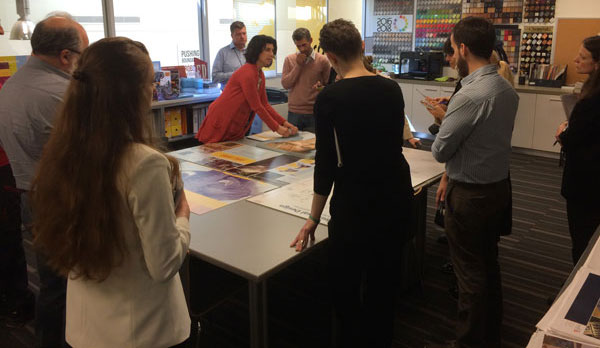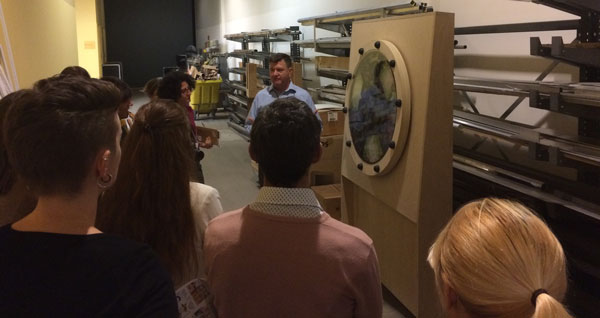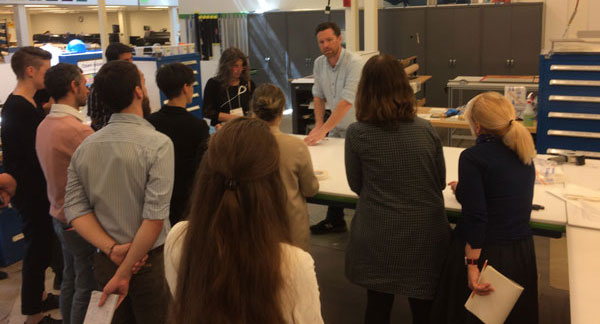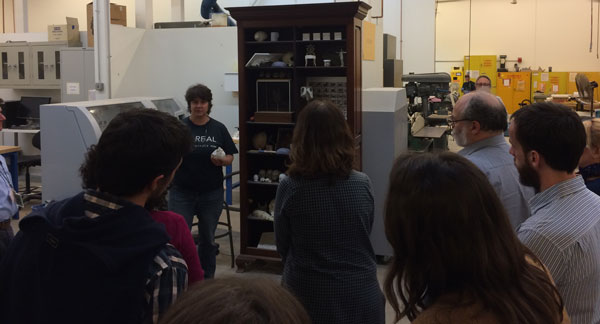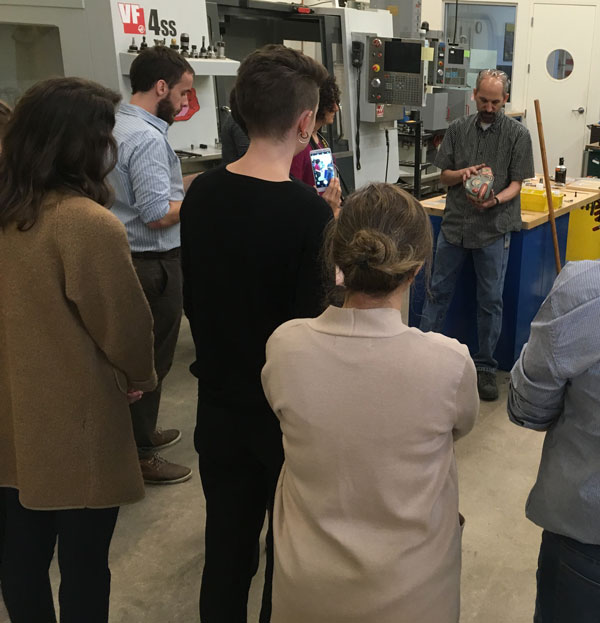Last week, Smithsonian Exhibits had a wonderful day hosting a delegation of Argentinian museum professionals for a lively conversation about exhibition development. We’re always happy to talk about exhibitions and learn from our colleagues, and this day was no exception.
Our guests are part of a cooperative program—Capacity Building for Argentinian Museum and Cultural Heritage Professionals—organized by the Smithsonian, the U.S. Embassy in Argentina, and Argentina’s Dirección Nacional de Museos (DNM). Their year-long program included a visit to Washington to meet with a variety of Smithsonian offices. The eleven participants represent five museums and DNM. The Smithsonian’s Office of International Relations and Global Programs organized the group’s stay in Washington and joined in on their visit to Smithsonian Exhibits.

Our conversation ran the gamut, from organizing exhibition teams to the best ways to create models. We continued our conversations as we toured our facility in Landover. We met with each of our units, allowing us to get multiple perspectives on a topic. For example, one of our conversations concerned how to best select materials that are cost effective and meet conservation needs for the objects. We were able to start the conversation with design, ask about how those decisions would affect graphic production, and then follow that up with questions about constructing the mounts and the cases.
The one common denominator of our conversations? Collaborate! The more the team works together and keeps communicating throughout exhibit development, design, and fabrication, the better the end results. Since there’s no one-size-fits-all approach to creating an exhibition, many conversations will be had along the way to determine the best options. This applies to how to best engage visitors, meet conservation needs, and well, pretty much every aspect of the exhibition process. There’s a lot of technology and research out there to make all of the steps happen, but those solutions only work if you talk to your team along the way. That’s a plan that makes sense no matter where your museum calls home.
Of course, as our day came to a close we exchanged business cards and contact information so that we could keep the conversation going. We look forward to many fruitful discussions about best practices and innovative approaches to museum exhibitions with our international colleagues.
